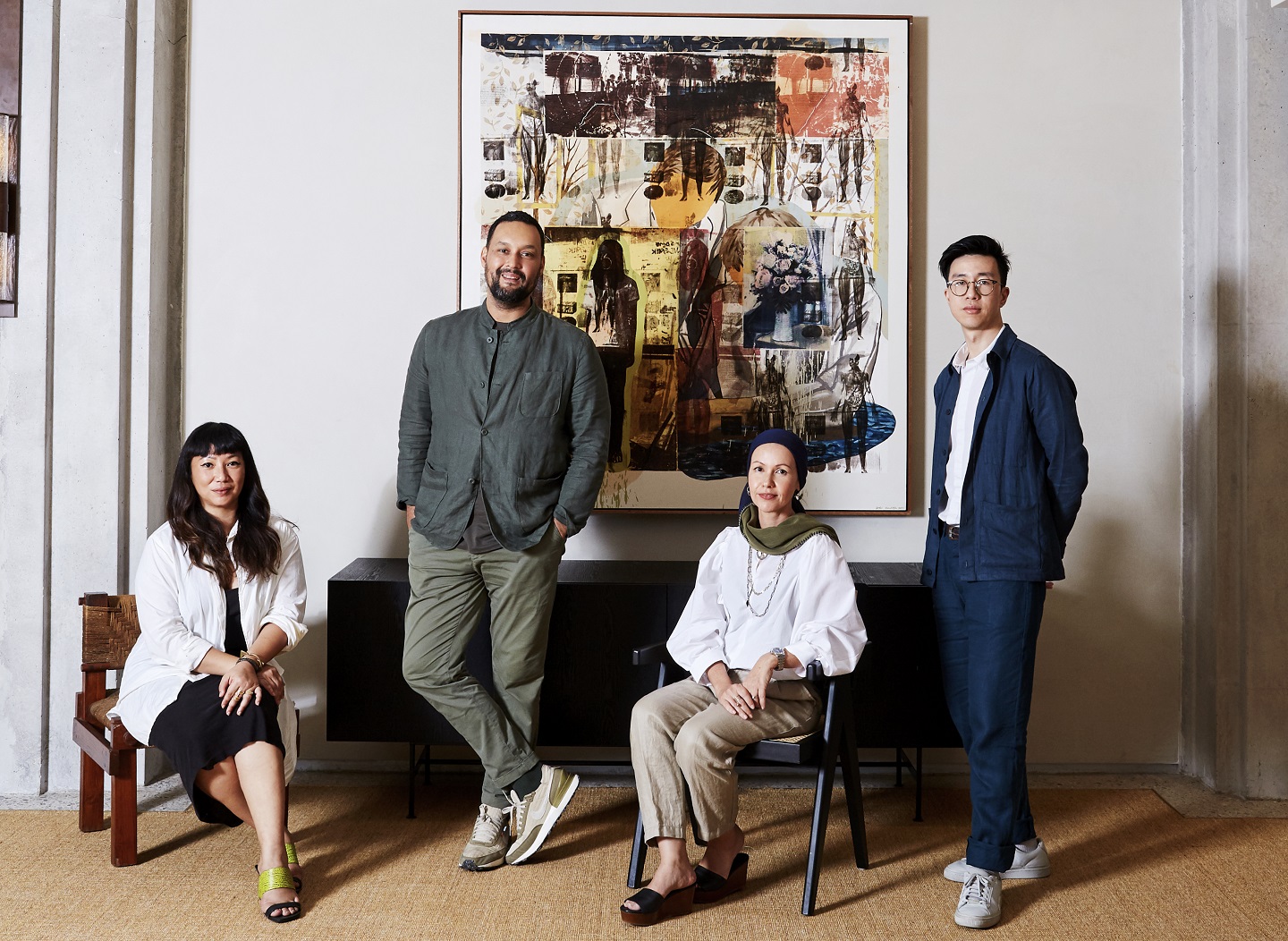
From left: Farah Azizan, Javier Perez, Adela Askandar and Justin Chen (Photo: SooPhye)
When Justin Chen and Javier Perez met, something clicked, like two puzzle pieces snapping into place. “It was very serendipitous,” says Chen, deputy CEO of Singapore-based investment holding company Arcc Holdings Pte Ltd. “It started very much as a tenant-and-landlord meeting; we had never even worked together at that point in time. It was just a conversation that was sparked. I think what drew us together was just that attitude towards what hospitality could look like because it doesn’t necessarily have to be cookie-cutter.”
Perez, restaurateur and founder of Kilo and Grain Traders in Singapore, adds, “I think we just started to have conversations about what we believed in, in terms of hospitality, redevelopment of neighbourhoods, and rethinking how neighbourhoods are programmed or experienced. I think that we both had, and still do have, very similar convictions or ideas of how things could be.”
So, when Chen began looking towards starting a project in Kuala Lumpur, Perez was one of the first people he thought of. The chosen site for this new endeavour was none other than the former Lee Rubber Building in Chinatown, KL. Built in the 1930s, this historic property was once part of Chinese Kapitan Yap Kwan Seng’s estate, later a Popular bookstore, and finally put up for sale in 2015. The following year, GF Land Sdn Bhd — owned by Hillington Pte Ltd, where Chen is a director — bought the building.
For this interview, we are seated on the ground floor of the transformed Lee Rubber building, now the new Else hotel, which officially opened its doors last week. It promises to offer a fresh approach to hospitality. The co-founders were determined that guests would experience “something Else”.
else_kl_before_and_after.jpg
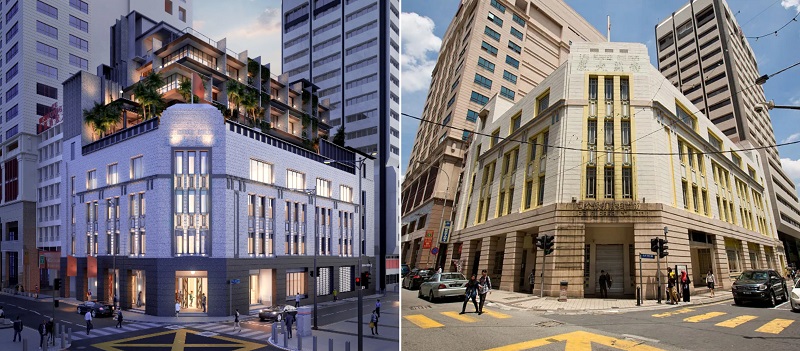
“We wanted to challenge ourselves by asking, what else can we do in this industry that already has such a long history and legacy? How can we blend a lot of what has been so endearing and so core to what hospitality is — the people, service, attitude, warmth — while catering to the mindset of the current global traveller, who is always switched on, someone who’s always digitally connected? How can we give them the opportunity for rest and for discovery? And so that thinking has led into what we’re trying to create here with Else, a brand that really speaks more to a multimodal kind of character of people today,” says Chen.
Despite the pandemic, over the last year, Chinatown has been burgeoning with life and activity. New cafés and bars have been mushrooming all over the city, bringing in an incredible energy, which was just what Chen was hoping to be a part of. “When we look at any kind of city, there’s always a nod to the downtown as a place that eventually will find rejuvenation and revitalisation. Often enough, it’s in pockets like Chinatown where history and rejuvenation tend to come together. Seeing things like what has happened in, say, Singapore over the last 20 plus years or so, we did make a bet that Malaysia would likely encounter similar trends. I think you already see it happening in Chinatown, people wanting to come back here to discover some of its historical roots and maybe tap some of the energy which comes with the history of the location as well as the setting. I think that’s what drew us to this area,” he explains.
Duality was an important theme for the hotel. The original name the co-founders had in mind was Ianu, derived from Roman mythology. The god Janus was said to have two faces, which gave him the ability to see into the past and future simultaneously. That name fell through, but the essence of duality was still fundamental. For instance, they wanted to pay tribute to the historic building while still having a timeless design and feel, and although the space gives the busy traveller the comfort to be constantly switched on and on the go, the hotel also offers the chance for wellness and respite. This sense of balance is key.
dyp_elseretreat_011.jpg
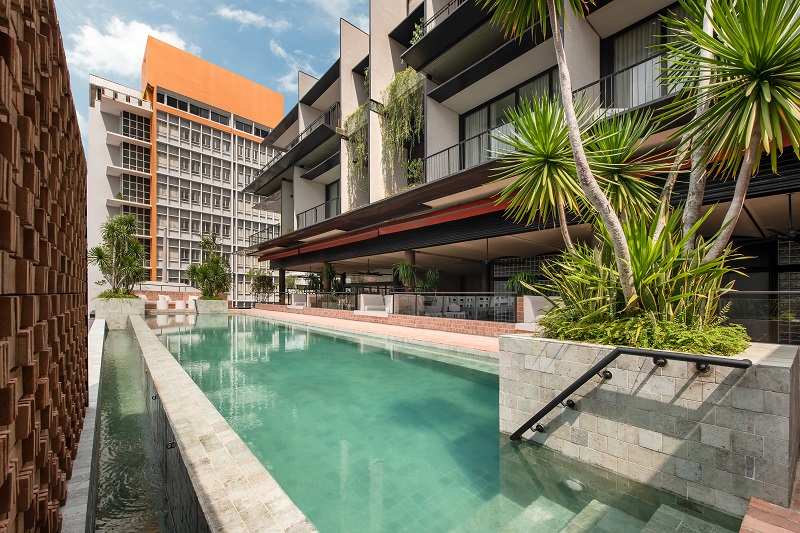
After sifting through numerous names, the co-founders landed on Else because it piques interest, beckoning you to ask, what else, how else and where else. “It means an alternative, to look for something beyond. I was mentioning this to Justin last week that the name is very fitting. I think if it was Ianu, maybe it would have been a bit too hard or even too detached or intimidating for people. Where Else at least feels a little bit warmer, inviting you to feel curious,” explains Perez.
With seven floors and 49 rooms, Else also boasts a 25m plunge pool, floating meditation pods, a gym and studio, a boardroom, drawing room and library. As you step into the hotel, it feels as though you have been transported into a world of chic and classic design. The mix of old and new, from warm brick floors and cool concrete pillars to modern furniture and sleek light fixtures, feels like a nod to history while still catering to a contemporary lifestyle. Seated cool and comfortable inside, the large windows allow you to take in the colour and bustling activity that animates Chinatown.
Just as we begin to dive into the design of the hotel, Farah Azizan and Adela Askandar — founders of Studio Bikin, the architects and interior designers for this project — join us. The last few days have been the first time all four of them have been together in Else since the pandemic first hit and there is an effortless synergy between them that has translated into the design of the space.
Construction for Else began in 2019, and even before the events of the following year, there were a few obstacles. Located in 145, Jalan Tun H S Lee, the building was unfortunately in a tight spot, requiring the contractor to get special permission for machinery to come into the space. Then, when the lockdown took place, more practical hurdles arose. “Everything was done remotely. Communication was challenging because the clients were based in Singapore, Shanghai and at some point, even Los Angeles, so trying to work within different time zones, designing and developing a hotel was difficult,” Farah says.
dyp_elseretreat_006.jpg
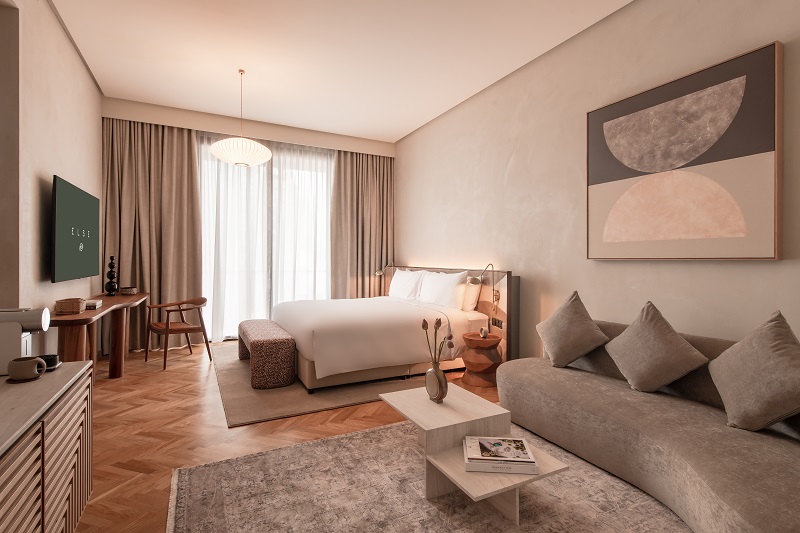
As the former headquarters of Lee Rubber group, the pre-war building’s façade must be maintained according to the National Heritage Act. Still, as it was an office building, they had to take great pains to transform the space for its new purpose and even add two additional floors. A series of surprises also unveiled itself: old secret passages were discovered beneath the building and they had to work closely with the structural engineer to troubleshoot problems found along the way. “These are things you cannot predict from the outset and that’s the challenge with designing existing buildings. For example, we realised every corner where the columns meet the existing ceiling is not the same. Some of the columns stick out more than others, but that was how the original building was built,” explains Adela.
“I think that’s the joy of working with old properties though,” Chen chimes in. “There’s a constant dialogue with the site. We were responding also to the neighbourhood of Chinatown and we wanted our space to feel like a refuge or a transportive type of experience against what’s outside, but also uncovering all these layers and stories which are part of the building, and then trying to figure out how to mediate through all these things.”
One of the main changes to the interior construction was the addition of voids that open up to the various floors, creating a centring feature for the building. “The staggered atrium openings were one of the key design decisions we pushed for. It was very important for the quality of the space and it allowed common areas to be naturally lit and ventilated,” says Adela.
Farah adds, “I think there’s all this multi-layered history that we felt needed to be liberated. The void was also created to symbolically release some form of energy [the building] hung onto, so a new energy could come in.”
_s1a3791a.jpg
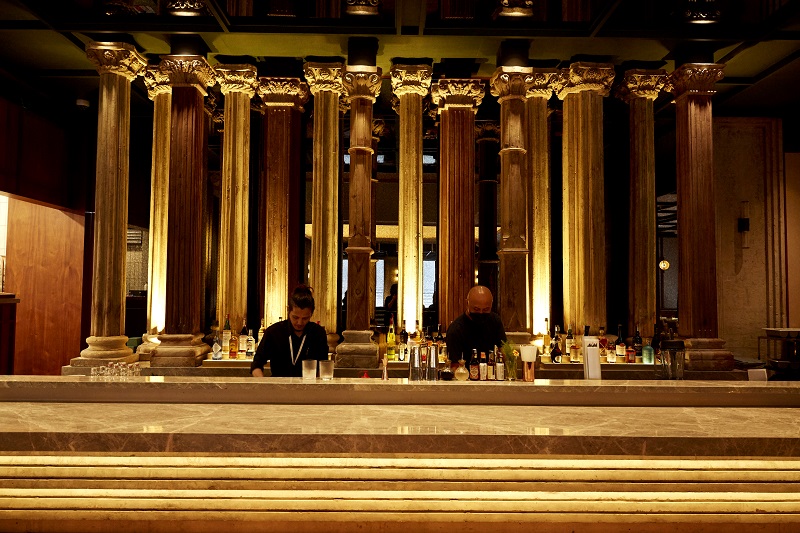
Other changes in the architecture are less obvious. For example, to reinforce the existing pillars, they encased them in concrete but as the look still has a vintage feel, it is hard to notice. “The intervention is quite subtle. I think we are always mindful of blurring the boundaries between what is new and old. Even with the extension at the top, we just wanted to keep things streamlined. As Justin mentioned, it’s important that within the hotel we have a kind of timeless appeal and we’re not subscribing to what is just the latest trend and design. So many, many iterations later — 17 to be precise — we have arrived,” says Farah.
The aim was for Else to feel like home, and while it does possess that sense of warmth and comfort, it is also beautifully put together with varying textures and furniture that make it inspirational. “I think there is some level of eclecticism to the way we’ve crafted the interiors because we were conscious of it not appearing like your standard five-star luxury hotel. So, there is an interplay between the existing building elements. Like the columns you see at a bar that were salvaged from a palace in India,” adds Farah. Each piece of furniture has been handpicked, from vintage Scandinavian chairs to vignettes by weavers from Sabah and Sarawak, in addition to the myriad of artworks decorating the walls. All of this makes the Else experience visually stimulating, allowing something new to always catch your eye.
While the ground floor is filled with deeper greens and rich browns, as you go up to the other levels, serene tones of white, cream and beige with hints of black and burnt sienna take over — all of which are made more vibrant with pockets of greenery scattered about. The atrium opens the space, giving it that airy feel — quite different from the usual claustrophobic hallways common with most hotels. Else has various types of rooms and suites to cater to different travellers, each with muted, understated colour palettes that are given dimension with different textures on the furniture, art, floors and rugs.
mana-hall-hero-scaled.jpg
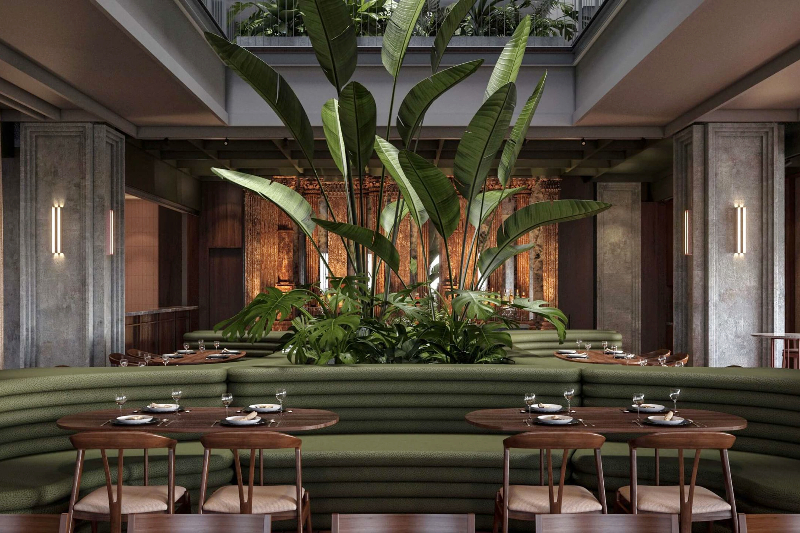
However, Else was not built just for hotel guests. It seeks to be the neighbourhood’s social living room and hub for good food. When planning the F&B concepts, Perez sought to break away from the regular programming of the traditional all-day restaurant. That means out with the tomato soup and club sandwich and in with more sophisticated dishes that will still give guests a sense of familiarity. With the support of Chen, Perez extended his Singapore-based Raw Kitchen Bar to Else and established Raw Kitchen Hall. “I felt the food was something that would be easy for this market to accept.” For their contemporary dishes, the restaurant utilises a mix of local and regional flavours — such as Thai and Indonesian — which are no strangers to the Malaysian palate.
“We’ve gotten very lucky as we were able to recruit two really young Malaysian chefs who had been living in Singapore for the last eight to 10 years.” Head chef Leong Chee Mun was formerly with Spago by Wolfgang Puck at Marina Bay Sands and sous chef Xing Wah Yin, with modern barbecue restaurant Burnt Ends by Aussie Dave Pynt. “It’s always about the ingredients and a certain type of simplicity. They do really good food at a high level of execution.” It would be a crime to dine at Raw Kitchen Hall without ordering the heavenly Creamy Ricotta — charred grapes, candied sunflower seeds and spiced tortilla — and Puerto Rican-inspired Black Mamba, a squid ink sofrito with tiger prawns and fermented chilli sambal topped with a luscious egg yolk. For something with a little heat, the Miso Jerk Chicken, doused in pineapple sriracha, may prove enticing. But be quick, there is no guessing when the chefs (who are always experimenting and itching to try something new) might change up the menu. “We are going to be moving more into a Thai-Latin kind of vibe over the course of the next few months,” Perez hints.
_s1a3810a.jpg
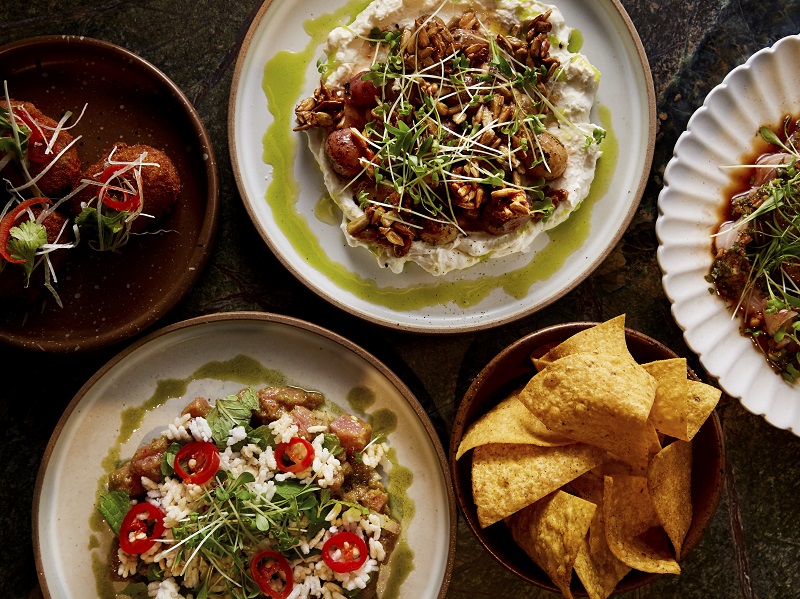
That aside, food connoisseurs should also be on the lookout for the second restaurant on the fourth floor. Perez was able to secure chef Jun Wong, who has had stints in Michelin-starred kitchens, including the three-starred Robuchon au Dôme in Macau and two-starred Narisawa in Tokyo and Sixpenny in Sydney. “She came on a recommendation by our GM (general manager) who had heard she was on the lookout for something new. I did some research and found a connection between friends in Singapore who made an introduction and we just started talking.” Yellow Fin Horse will be an intimate restaurant that serves the season’s best produce, especially seafood, procured from within and outside the country. The fine dining restaurant is expected to launch between November and early December.
The co-founders believe that Else will serve as an important landmark as the area continues to expand and flourish. “I say this with as much humility as possible, I do agree that we are an anchor. We can be an anchor in Chinatown alongside [something] like Rex, because there’s no one else at this scale. Everyone else is running smaller restaurants and places, so this is a beautiful opportunity for us. It’s for us to screw up, to be very frank,” says Perez.
The plan for Else was never really the case of gentrification. The district’s rich history and heritage have stretched their roots deep and long, but it is the vibrant community that feeds it the exuberance to grow tall and wide. The charm of the old city will never fade, but the new generation pushing for revival will allow it to be seen with fresh eyes. “Heritage doesn’t necessarily always have to be represented by conservation and preservation; it can also be represented by the activation of the space,” Chen shares.
“Chinatown, for us, feels very much like a microcosm of what makes Malaysia very exciting because of how that creative energy is represented here. And I think the willingness to try, to experiment is a core strength. I think it also has come across very strongly how open and welcoming the community is and the sense that it wants to work together to improve things and support each other as a whole. This is something we hope to contribute back to, to maybe bring a different perspective or lend some other resources and support to what has already been done so well.”
This article first appeared on Sept 19, 2022 in The Edge Malaysia.


